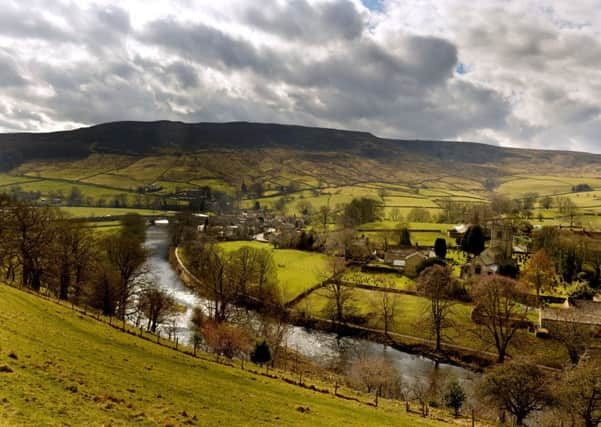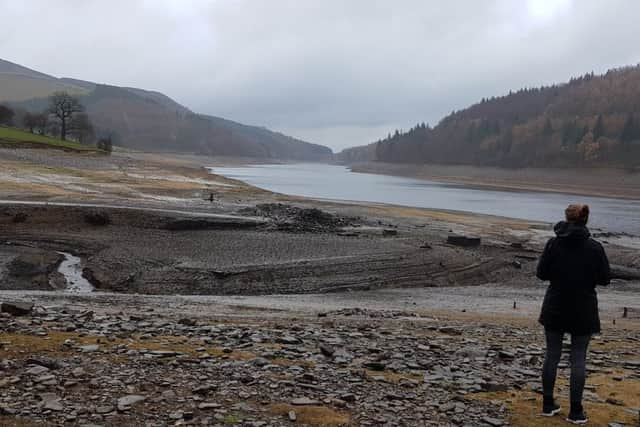Drought measures to recharge Yorkshire's reservoirs


Three months on the cracks were beginning to show as, with little rain, local reservoirs were precariously low. By the end of September, some were at half capacity and this winter Yorkshire Water took the rare step of issuing a subtle warning call.
Demand for its water, as temperatures soared over the summer, rose by up to 200 million litres a day – more than the daily demand for the city of Leeds. And not only had the firm been forced to take more from its reservoirs to meet demand, but there hadn’t been the rainfall to replenish its stocks.
Advertisement
Hide AdAdvertisement
Hide AdHeavy rains over recent weeks have brought some relief, and now, measures in the form of drought permits are being brought in so that the region’s reservoirs can refill.


“It’s about planning, and making sure that we have got something in place if it’s a dry winter,” said Yorkshire Water’s Paul Carter, political engagement manager. “We are recharging a bit more.”
Bids for drought permits were sought over Christmas, with one for the River Wharfe now approved and the decision due over a second on the River Derwent any day.
These permits, from the Environment Agency, are temporary measures to allow Yorkshire Water to rely on additional supply from its rivers, easing the pressure on reservoirs.
Advertisement
Hide AdAdvertisement
Hide AdAt present, it can only draw so much, and it is approaching its limit. The permits will extend this, to the end of March.
“Since last summer, we’ve been looking at re-balancing the rivers,” said Mr Carter. “We can move water all around the region, we can take water out of the ground near Hull and move it to Sheffield if needed, and we have been doing that.
“But the drought permits are about planning, to give us that flexibility if needed. To get us back to where we want to be and get us into a better position for the coming year.”
Yorkshire saw just 58 per cent of its average rainfall last summer, Met Office data shows, with 125 millilitres from June to August. It was the region’s driest season since 1995, said meteorologist Alex Burkhill.
Advertisement
Hide AdAdvertisement
Hide Ad“It was the eighth driest summer since records began, in 1910,” he added. “And it wasn’t just the lack of rain, it was how long it lasted for.
“It really was a good four months of weather being substantially drier than average. And since then, there hasn’t been enough to counter the effects of such a summer.”
Over coming months, he added, early indications are that it may be slightly drier winter than usual, continuing that trend. But there has been some reprieve for Yorkshire. Already, and in the wake of sudden downpours in early December, the reservoirs are starting to fill. In three weeks during last month, the greatest surge the company has ever known saw capacity levels rose by 26 per cent.
The region’s reservoirs are now 84 per cent full. Further permits had initially been sought for South Yorkshire reservoirs and were in the process of being drawn up for other parts of the county. These, aimed at reducing the amount used from Yorkshire’s reservoirs to top up the region’s rivers, have now been withdrawn or scrapped as the situation improves.
Advertisement
Hide AdAdvertisement
Hide Ad“Now, we are almost back at where we would normally be at this time of year,” concluded Mr Carter.
Stuart Sampson, Environment Agency water manager, said: “Rain in November and December ended six consecutive months of below-average rainfall in England.
“Winter refill of reservoirs and aquifers has started and river flows have increased, which has reduced pressure on wildlife and our environment. However, some groundwater levels continue to be below normal for the time of year and are expected to take some time to re-fill.
“We will continue to work with water companies, industry, farmers and other organisations to prepare for next year. We urge everyone to use water wisely to protect the natural environment throughout 2019.”